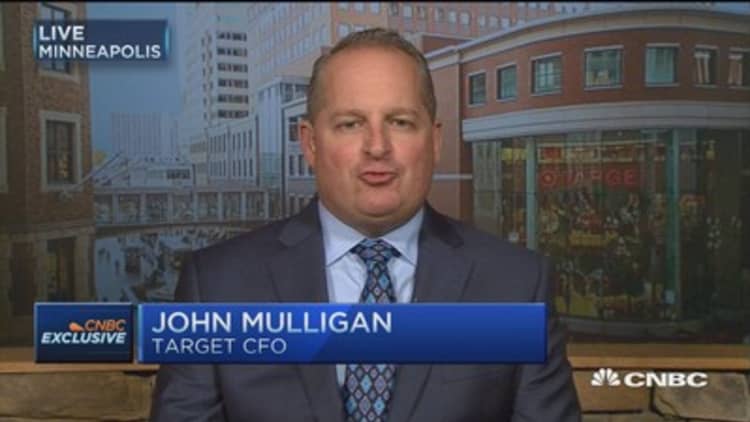Consumer preferences are constantly changing—a fact that some retailers are all too familiar with.
Whether it was churning out passé logo tees that had long since fallen out of fashion, focusing too much on price and not enough on unique merchandise, or giving customers change they had never asked for in the first place, retailers have had their share of stumbles over the past few years.
But just because they're down doesn't mean they're out; for proof, just take a look at Best Buy's first-quarter earnings results.
Despite ongoing weakness in the tablet space and a 5 percent sales decline in the consumer electronics category, domestic revenue at the chain rose 1.4 percent during the period, on top of same-store sales growth of 0.6 percent. The results sent the company's stock 5 percent higher in afternoon trading, pushing its shares up 42 percent over the past 12 months.
Read MoreCrocs coming back in style? For Wall Street, yes
It's a far cry from the days when investors worried that the electronics store's business was next in line to be wiped out by Amazon's low prices and the convenience of online shopping.
"Throughout the quarter, our strategy of delivering 'advice, service and convenience at competitive prices' continued to resonate with our customers," CEO Hubert Joly said.
Here are three other retailers that are making strides in their transformations. ( Tweet this. )
Bringing 'Tarjay' back
Target blew past fellow big-box store Wal-Mart in the first quarter. Although both discount retailers saw more shoppers in their stores for the second consecutive quarter, Target's same-store sales gain and earnings-per-share growth outpaced those metrics at Wal-Mart.
Read MoreWal-Mart's woes: Five ways it's trying to fix them
The bullseye retailer's results were helped by growth in its so-called "signature" categories—style, baby, kids and wellness—which it's tapping as a source for future growth. Comparable sales in those key categories grew at more than double the company average.

Since CEO Brian Cornell took the helm at Target last year, the company has been working to restore its "Tarjay" aura, by focusing not just on low prices but on differentiated merchandise. It's testing updates to its food format, including bringing in more organic and natural options, and built cachet with its recent Lilly Pulitzer collaboration. That limited-time collection sold out 90 percent of its apparel items in the first day.
Although comparisons will get harder for the retailer, which many shoppers abandoned following its high-profile data breach at the end of 2013, Cowen and Co. analyst Oliver Chen said Target is now "out-executing peers to gain share."
American Eagle flies above the competition
The demise of polos and logo-heavy apparel looked like it could be the nail in the coffin for the major teen retailers. But under the leadership of a new merchandising team, which has brought its products more in-line with fashion-savvy competitors H&M and Zara, American Eagle has emerged as the "best-in-class" name among the teen set.
Read MoreTarget CFO talks groceries and online experience
In the first quarter, American Eagle's comparable sales rose 7 percent, with gains spread across its women's, men's and Aerie lingerie brands. The retailer also issued second-quarter guidance that was ahead of Wall Street expectations.
Although it's still up against weak past performance—the company's revenues have fallen the past two years—Stifel Nicolaus analyst Richard Jaffe said he views the company's merchandise turnaround as "strong and sustainable." The retailer also stands to gain from resurgence in denim, particularly over the back-to-school period.
"Competition remains back on their heels, providing ample room for American Eagle market share gains to continue," BMO Capital Markets analyst John Morris said.
Penney's investors still torn
J.C. Penney's sales gains bested Macy's in the first quarter, as the department store raised its full-year sales and earnings outlook. Despite same-store growth that fell short of guidance, investors responded positively to the company's results, sending its shares 2 percent higher since its report last week. Outgoing CEO Mike Ullman said on the firm's conference call that it is "switching gears from defense to offense" this year.
Read MoreIs Macy's run over? Why the retailer is falling short
In a note to investors, Deutsche Bank analyst Paul Trussell said that while he gives Penney's the "benefit of the doubt" in its ability to "claw back" more than $300 million in EBITDA this year, "we disagree with the notion it can make equal progress in [2016] and [2017] without having the tailwind of fixing prior mishaps."
Those mishaps include a failed reinvention strategy by former CEO Ron Johnson, which involved eliminating coupons and steering away from the company's popular in-house brands.


